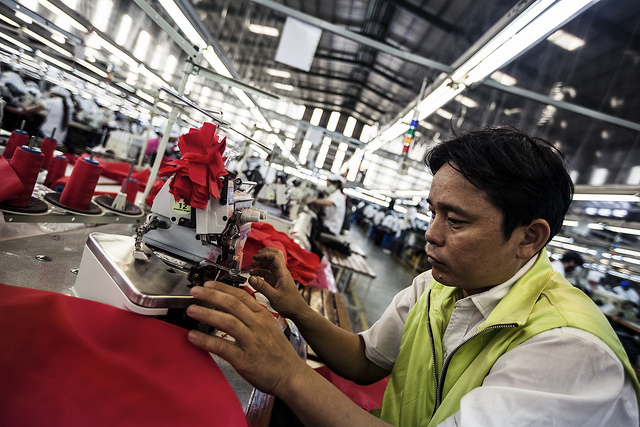
Offshoring is still beating reshoring — and reshoring is dropping off fast.
Just like the mullet, shoulder pads and parachute pants, it looks like that whole reshoring thing might be nearing its end — and in fact, it might not have actually ever even been a trend at all.
Global management consulting firm A.T. Kearney just released its annual U.S. Reshoring Index. The findings show that reshoring not only failed to keep pace with offshoring in 2015, it actually saw the largest one-year drop in 10 years.
Roughly 700 reshoring cases have been announced over the last five years, but only around 60 reshoring cases are expected for 2015. That’s a big drop from 2014, which saw 208 cases.
And while reshoring pundits have pointed to rising labor costs in China as a chief reason why companies will bring manufacturing operations back to the United States, many have just been moving their facilities to other Asian countries. A.T. Kearney reports:
“They have done so without incurring significantly higher supply chain costs, despite the weaker infrastructure and supporting ecosystems of these new low-labor-cost destinations. Vietnam has absorbed the lion’s share of China’s manufacturing outflow, especially in apparel. U.S. imports of manufactured goods from Vietnam in 2015 will be nearly triple the level of imports in 2010.”
A.T. Kearney’s findings are in line with other recent manufacturing sector developments. Manufacturing simply is in terrible shape. Hiring continues to flat line and factory production has stagnated.
Meanwhile, imports continue to hurt American manufacturing. The most recent trade figures show that the deficit with China alone in 2015 sits at $306 billion, compared to $285 billion at the same point in 2014.
It’s a far cry from what many reshoring advocates argued would happen just a few years ago, when they pointed to rising labor costs as one reason why manufacturers would move their operations back to the United States.
Rumors of China’s manufacturing death have been greatly exaggerated, A.T. Kearney notes, with researchers writing that Chinese manufacturers are evolving and “their growing capabilities will challenge their Western rivals in new ways.”
Other findings of note from the index:
- Some of the sectors that led the reshoring effort in recent years also have shown the highest increase in offshoring, including the electronics, appliances, furniture and machinery industries.
- Researchers predict that if ratified, the proposed Trans-Pacific Partnership between the United States and 11 other Pacific Rim countries “may weaken the business case for reshoring further.”
- One trend on the rise? Nearshoring. Many companies are leaving Asia to move their operations to Mexico.
Although the researchers write that “it’s fair to say that reshoring as a ‘trend’ is officially dead,” they also argue that the “United States still tops the list of countries where companies from all over the globe want to invest in the coming years.”
It seems that while many U.S. companies aren’t interested in moving their manufacturing back home, many foreign countries see a lot of growth potential here.
Chinese companies in particular have invested heavily to create facilities on U.S. soil, spending about $46 billion since 2000 to build plants and create U.S. manufacturing jobs. Of the 60,000 new manufacturing jobs created due to reshoring in 2014, about 8,000 were at China-owned companies, according to A.T. Kearney.
And although the reshoring trend might appear to be going the way of the Trucker Hat, there is still a lot we can do to revive it. The United States needs a strong manufacturing strategy, one built on balancing trade, investing in our infrastructure, enhancing our workforce training programs and rebuilding our innovation base.
